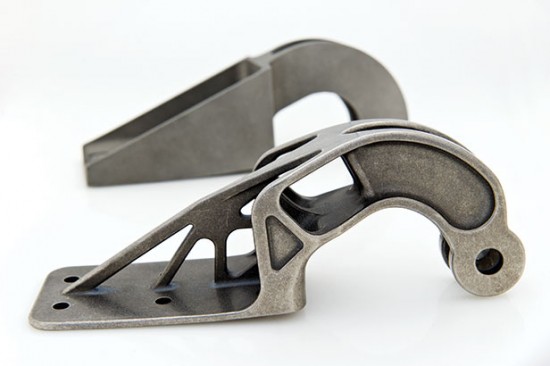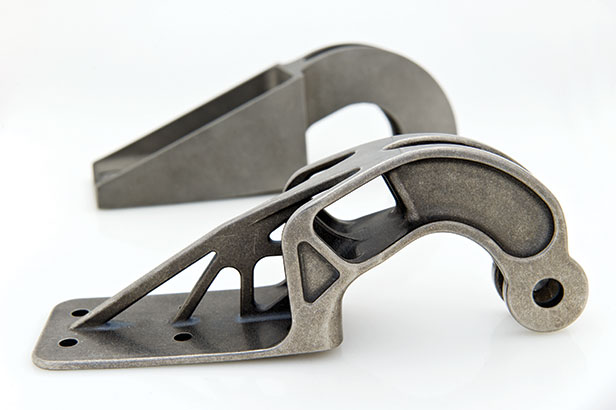Sustainable Energy
Printing Parts
Systems that print mechanical components with metal powder could be used to build lighter, more efficient airplanes.



Chris Turner, an engineer at EADS Innovation Works near Bristol, England, twists a lever on a boxy black machine, and a porthole opens to reveal a dark cavity with a floor covered in gray powder. An invisible beam sweeps across the powder, and sparks fly. The box is an additive-layer manufacturing machine, sometimes known as a 3-D printer, and it is making a small part for an Airbus A380 airliner. EADS, which owns Airbus, hopes the device can transform manufacturing. Among other things, it could produce parts that make airplanes lighter, so they use less fuel.
3-D printers can make complex shapes that can’t be manufactured with conventional techniques. Until recently, however, they couldn’t print strong, durable objects. The machine Turner is using can make intricate forms out of high-grade metal, an advance that has allowed researchers to apply the design possibilities of 3-D printing to mechanical parts. The printers use software that works out where the parts need to bear loads and places material just in those areas, halving the weight of the complete part without sacrificing strength. That saves energy, metal, and money. The complex, curving forms that result couldn’t be cast in a mold or carved out of a larger block even with the most advanced computer-controlled tools, but they can be printed in a succession of layers tens of micrometers thick.
Turner is testing whether printed parts can stand up to use in airliners, helicopters, and spacecraft. “Once we know that, we can scale up,” he says. “We could adapt this to make large aircraft components.” The possibilities include wing spars, the long beams that support wings.